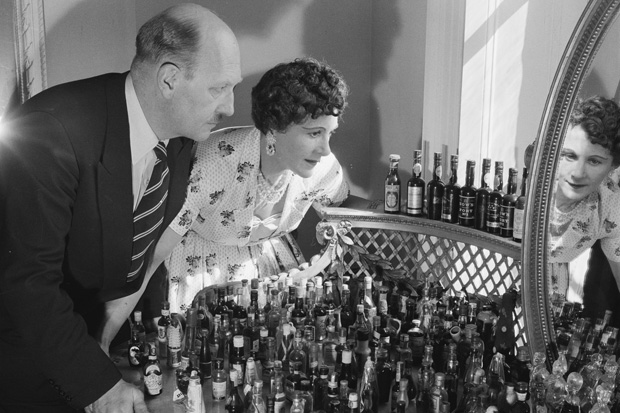At the back of every drinks tray or cabinet there are always some stray bottles. Some deserve to be lonely, others just end up that way. But it is occasionally worth sifting the wheat — or at least grain — from the chaff. Here is a guide for doing so.
Vermouth Only keep your bottle if you make your own martinis. If you drink them as they should be drunk you will need so little that only a martini alcoholic could ever reach the bottom of the bottle. You won’t need to buy two in a lifetime. So keep it, but on no account ever drink it on its own.
Curacao and other brightly coloured things Abandon all hope. You will never find a use for them. They cannot be used in the home. Try to dispose down the sink, otherwise at a local authority waste site.
Sugar solution Even if you are not drinking sours much these days you should keep this bottle. It will never go off, and making your own is irritating. Should you develop a thirst for a sour, once you have poured boiling water over a packet of sugar you will have to put it in the fridge before you can mix it with ice. By that time your throat will be parched and you will have ended up drinking something else.
Campari/Dubonnet These should not be at the back. Coax them forward to a position of pride.
Bourbon/rum/Southern Comfort, etc. Discover a cocktail you can use them up in. Have a blast, and then resist the temptation ever to replace them.
Absinthe Your bottle, like everyone else’s, probably dates back to that moment in the 1990s when absinthe became available in the UK. Your bottle will be half-full because you discovered the same three things everyone else did. A preparation which includes setting fire to sugar dipped in alcohol is dangerous after the first glass and causes small carpet-fires after the second. As there is no wormwood in modern absinthe, it can neither help you hallucinate nor paint impressionist masterpieces. You will also have discovered, with everyone else, that absinthe is unpleasant to drink. Nothing else can be done with it. Pour it away. Or give it to a teenage relation who is showing too much interest in booze and needs to be put off it for a few more years.
Cassis A very important bottle. It should never have found itself all the way to the back. With this single bottle the question of what to do with cheap white wine disappears and you can tell certain people honestly that you did indeed drink the wine they brought.
That home-made jar of something you were given by a relative. This is almost always sloe gin, though sometimes a variant involving damson, elderflower, dandelion, hay or the like. It is often the best stuff and ought to be preserved and cherished. Brands are all of inferior quality. Since alcohol content can vary anywhere from around 20 to just under 100 per cent it should not be served to drivers. But it is well worth keeping in reserve for bores who need livening but ask for small measures.
Cooking brandy Remove immediately. This is what it says it is — for cooking, not drinking. While it stays there it is at least possible that someone — even yourself — will attempt to drink it. Move it to a kitchen cupboard and when the festive season arrives pour the whole lot over the first mince pie or Christmas pudding you see. It is best to create this inferno outside rather than keeping it in a place where it could be drunk and cause an inferno on your insides.
Anything with pineapple or coconut flavours in it These were inherited from a relative whose flares you also inherited but threw away. Do the same with their bottles. Otherwise they will present a persistent attraction to very drunk adults and certain children.
The bottle of Scotch/wine/champagne from someone’s birth year Drink it now or set a definite date for doing so. If you do not, it will be consumed by your ungrateful executors.
If you follow these simple rules, you will gain room at the front of your stash, then you can stock up on more drink. Most of all, remember: you can never have too much whisky or gin and a well-stocked drinks tray remains one of life’s great views.







Comments